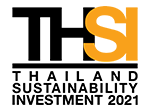-
Agent / FA
Agent / FA เรายินดีให้ข้อมูลและพร้อมบริการคุณเสมอ
-
Corporate
Corporate Building up your Confidences. We are happy to provide more information to resolve your doubts and questions.
-
Investor
Investor We are happy to provide information for your investment decision in our company.
- Sustainability
- 02-777-8888
- TH
- Products
- Buy Online
-
Policy Services
Policy Services เพราะคุณคือคนสำคัญ เรายินดีให้ข้อมูล เพื่อแก้ไขข้อสงสัยของคุณ
- Join Us
- Contact Us
-
Login / Register
Login / Register
About Us
-
Vision and Mission
-
Company History
- Board of Directors
-
Good Corporate Governance
- IT Steering Committee
- Corporate Governance and Sustainability Committee
- Investment Committee
- Audit Committee
- Risk Management Committee
- Nomination and Remuneration Committee
- Performance Assessment and Evaluation Committee
- Good Corporate Governance’s Policy
- Privacy Notice
- Personal Data Protection Policy
- Cookies Policy
- Anti-Fraud Policy
- Anti-Bribery and Corruption Policy
- Corporate Risk Management Policy
- Whistle Blowing Policy
- Information Disclosure Policy
- Sustainable business development strategy
- Conflict of Interest Policy
- Related Party Transaction Policy
- Compliance Policy
- Tax policy
- Guidelines for alliances and business partners
- Risk factors impact to Company’s Business and activities
- Code of Conduct for Business Partners
- Environmental Management Policy
- Human Right Policy
- Sustainability Management Policy
- Anti-Money Laundering and Combating the Financing of Terrorism and Weapons of Mass Destruction Policy
- Fair Customer Treatment Policy
- Use of Inside Information and Securities Trading
-
Agent / Broker Inquiry
-
Awards
-
Certification
-
TVC
-
Disclosure Report (Required by OIC)
-
-
-
Third-Party Notices
Good Corporate Governance
Corporate Risk Management Policy
The Company has established a systematic risk management system throughout the organization in accordance with international standards cover all core activities and risks in all aspects, by identifying risk factors and causes, and conducting risk assessment and analysis. Prioritize risks, manage, monitor and evaluate risk management results to ensure that the company's operations achieve its objectives and goals and remain within an acceptable risk level.
The Company has determined to communicate the risk management policy to all business units and has assigned executives and employees at all levels to be aware of, participate in risk management, and strictly comply with it, along with specifying Corporate and Operational Key Performance Indicators (Corporate & Operational KPIs). To Use as a tool to measure and evaluate the performance in various important aspects of the organization's business operations, including climate and environmental risk management. To reflect the efficiency and effectiveness of the organization and various Business units, the Company has required the executives of the responsible Business units to report their performance results to senior executives on a monthly basis. By considering risk factors and risks according to the Key Risk Indicators (KRIs) that may affect the performance and KPIs to be consistent with the company's business plan and strategy for competitiveness and profitability. To maintain the appropriate level of capital adequacy by establishing policies, practices, operational measures, internal controls and/or risk management plans that cover all core activities appropriately. To create financial stability and confidence among policyholders that the company can pay benefits according to the insurance policy in full and on time, which in addition to being a good image of the company, also helps maintain the reputation and good image of the insurance industry as a whole.
-
Call Center 02-777-8888
- Hi, how may I assist you today?
We use cookies on our website to give the best experience including to purpose information and other contents. Using our website means you accept Terms and Conditions Privacy Notice and Cookies Policy.




